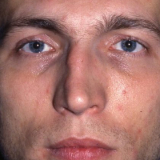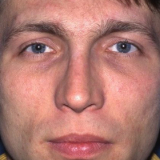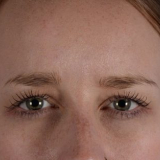How to Choose the Right Facial Plastic Surgeon

We are fortunate to live in a time where the field of medicine has become more specialized and able to be tailored to specific problems. As a result, patients are left with certain choices for their medical care. When it comes to choosing a facial plastic surgeon, let’s explore some of the factors that should be considered:
Contents
Specialization and Expertise
There’s a difference between a general plastic surgeon and a facial plastic surgeon. Although there are exceptions, the majority of general plastic surgeons perform procedures of a reconstructive and cosmetic nature on the whole body – not just the face. Facial plastic surgeons differ in that they only perform procedures on the face. It is widely accepted in the field of surgery (similar to any other discipline) that you are most adept at doing the things you do most. Indeed even within the field of facial plastic surgery some surgeons have additional focus on certain procedures such as rhinoplasty or facelifts. The points to consider when deciding on expertise are surgical training, credentials and certifications, experience, before and after photo galleries and reviews.
Surgical Training
Facial plastic surgeons partake in an Otolaryngology (ENT) – Head & Neck Surgery residency program which lasts 5 years after obtaining their medical degree. During this training, the focus is solely on the head and neck. Following this, board certified facial plastic surgeons complete 1 or 2 years of intense fellowship training focused on plastic and reconstructive surgery of the face. These fellowships are highly competitive and only 45 positions exist in North America. Be sure to learn the details of the surgical training that the surgeon you are consulting with has completed.
Credentials and Certifications
Upon completion of all requisites of the residency and fellowship programs facial plastic surgeons become double-board certified by both the American Board of Otolaryngology – Head & Neck Surgery (ABOHNS) – and the American Board of Facial Plastic and Reconstructive Surgery (ABFPRS). These credentials should be noted by the patient as proof of surgeons upheld to the highest standards.
Surgical Experience
Experience does not just mean the number of years the surgeon has worked in the field but more relates to the number of cases related to the procedure(s) that a prospective patient is seeking and just as importantly the lessons learned by the surgeon during those cases. For example, in rhinoplasty, the surgeon needs to keep detailed diagrams of the maneuvers performed in each case and then review the results with long term, postoperative photographs. The patient should also note the quality of work that has been performed and the comprehensive nature of care including ample follow-up. And, one should be cautious of results shown on social media which may be highly biased and even altered. The surgeon should be able to provide a range of realistic results which ideally include the patient’s demographic.
Before and After Photo Galleries
A surgeon should be able to provide several standardized, unaltered, before and after photographs of real patients with consistent lighting and framing between photos. These photos can only be obtained in a dedicated photography room with professional equipment. Hand held cameras used in the clinic chair result in photos with erratic discrepancies from picture to picture making it very difficult to decipher what real changes have occur. Unfortunately, nowadays, too many websites and social media sites are full of deceptive before and after “smoke and mirrors” strategies portraying better outcomes than what a prospective patient can realistically expect. Also, keep in mind that before and after galleries tend to be ‘cherry-picked’ collections of the best results and may not be representative of what a prospective patient can expect. During your consultation, be on the lookout for a dedicated photo studio in the office and when reviewing before and after photo galleries look for consistent lighting and layout from photo to photo. If possible, ask to see before and after photos representative of what you may realistically expect such as a series of 10 or 20 consecutive patients that underwent the procedure in question.
Reviews
There are numerous outlets for reviews which most commonly include Google, Facebook, and RealSelf. Patient reviews are vital to offering prospective patients insight into the overall experience. It’s important to remember, though, that not all reviews require the writer to be verified as legitimate. Some review sites don’t filter anything – no matter how true it is. When looking at reviews, try to look for trends and averages. All 5-star, perfect reviews should make a patient wonder just as much as mostly 1-star reviews. Honesty is key. No surgeon is perfect and reviews should reflect this. Our website publishes our reviews for patients to view and we feel it reflects very positively and truthfully on our practice. Do not forget the value of word-of-mouth reviews as well as these are some of the most powerful!
Support Staff and Resources
Before, during, and after a procedure or treatment, it is important to familiarize oneself with the support staff surrounding the surgeons. From the front desk to the office manager, developing relationships is vital to a well-rounded, positive experience. A Med Spa skin care team can provide support in dealing with bruising and swelling following surgery. Comprehensive patient resources with readily available before and after care instructions reviewed in person at the time of the preoperative visit as well as necessary supplies play a vital role in outcomes.
The general feel and vibe during consultation
Important questions to ask yourself include: is the office and surgeon devoting adequate time to cover all the talking points or did the consultation feel rushed? Does the surgeon completely understand my goals? Were all the options reviewed or does it seem that a cookie-cutter approach is being used? Do I feel that the surgeon is being honest and forthright? Am I ‘connecting’ with the surgeon and staff? Does it feel that the office can meet my expectations and deliver the established goals? Did I leave the office with a good feeling?
These are some guidelines that can help in choosing the right facial plastic surgeon. Each person is unique and no one surgeon is the solution for every patient. With some attention to the points above and some due diligence, it should be possible to choose the right surgeon for you.






